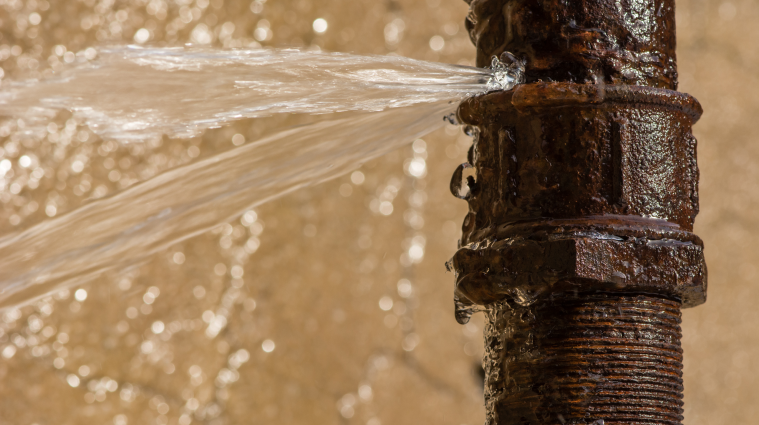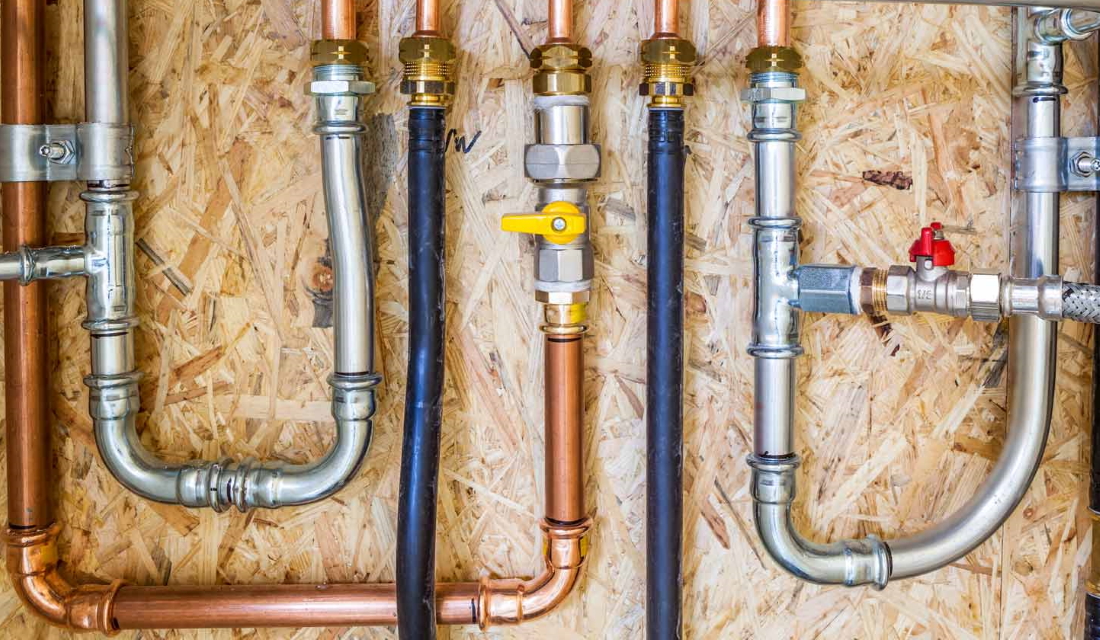A Guide to Water Hammer: Spotting Causes and Implementing Effective Fixes
A Guide to Water Hammer: Spotting Causes and Implementing Effective Fixes
Blog Article
On this page underneath you'll find a lot of excellent data about Understanding Water Hammer And How To Stop It.

Introduction
Have you ever switched off a faucet and heard a loud bang or knocking sound originating from your pipes? That unsettling sound, frequently described as a sudden thud or beat, is known as water hammer. It's not simply an aggravating peculiarity of older homes-- water hammer can happen anywhere, and if left untreated, it can result in more substantial pipes troubles. In this article, we'll demystify water hammer, explore its causes, and talk about functional means to fix and prevent it. Consider it as your ultimate guide to taming those unruly pipelines finally.
Abrupt Valve Closure
Swiftly turning off a faucet or device can create an abrupt water flow stop. Dish washers and washing devices, which have automatic shutoffs, are commonly wrongdoers in producing these unexpected stops.
Incorrect Pipeline Sizing
Pipes that are as well little for the quantity of water streaming through them can boost the possibility of water hammer. Limited space indicates higher speed, and greater velocity implies more powerful pressure rises.
High Water Pressure
Extreme water stress not just drainages and money however additionally magnifies the impacts of water hammer. The even more force behind the circulation, the tougher it hits when compelled to stop.
Why is Water Hammer a Problem?
You might ask yourself, "Is water hammer simply a noise problem?" It's more than that. While the noise can be irritating, the real trouble lies below the surface area.
The Scientific Research Behind Water Hammer
Water hammer is basically about kinetic energy. When water relocates through pipelines, it lugs energy. If something interrupts that movement-- like a shutoff closing also promptly-- this energy changes into a stress rise. Pipelines, fittings, and valves experience this spike in pressure, commonly leading to that banging noise you fear.
Common Reasons For Water Hammer
Comprehending the origin of water hammer is the very first step to resolving it.
What is Water Hammer?
Water hammer is a shockwave of stress that happens within your pipes when water flow quits or transforms direction suddenly. Imagine a group of joggers running down a slim corridor, just to have a door bang shut at the end. The unexpected stop creates a domino effect, leading to a crash of bodies. In your plumbing system, water imitates those runners, and when it's required to stop unexpectedly, it develops stress waves that travel with the pipes.
Noisy Pipeline and Family Disturbances
The most apparent problem is the noise. Hearing beats and bangs whenever you do laundry or run the dishwasher can disrupt the tranquility in your home. It might not feel like a big deal in the beginning, however with time, it can wear on your nerves.
Possible Damages to Pipes System
Water hammer puts tension on valves, joints, and installations. Repetitive stress rises can compromise links, create leakages, or perhaps result in pipe ruptureds-- a costly and inconvenient situation nobody wants to face.
Long-Term Damage
Gradually, persistent water hammer can bring about more constant repairs, premature wear on components, and a reduced life-span for your plumbing system. Think of it as minor tension collecting right into a bigger problem.
Identifying Water Hammer in Your Home
Before you can repair a problem, you require to validate it exists. So, how do you understand if you're managing water hammer?
Dead Giveaways and Sounds
Listen for knocking or pounding sounds when turning off taps or running home appliances. If the noise seems to find from within the wall surfaces, there's a good chance water hammer is at fault.
Carrying Out a Basic Evaluation
Attempt transforming taps on and off at various rates. If you observe the noise only occurs with certain fixtures or at certain times, you've gathered clues regarding where and when water hammer is occurring.
Short-Term Fixes to Regulate Water Hammer
If water hammer is driving you up the wall, there are instant actions you can take.
Readjusting Water Stress
If your home's water pressure is established too expensive, take into consideration setting up a stress regulatory authority or changing the existing one. Reducing the stress can minimize the intensity of those shockwaves.
Securing Loose Pipes
Pipes that aren't correctly protected can magnify water hammer noises. Including pipeline bands or supporting products can aid stabilize them and stop them from rattling versus surfaces.
Using Air Chambers or Arrestors
Air chambers are simple tools that trap a pocket of air in a vertical pipeline. This air functions as a cushion, soaking up the pressure rise. If you don't have them, mounting water hammer arrestors can accomplish a comparable effect.
Long-Term Solutions and Upgrades
If you're looking for even more permanent repairs, it could be time to think about some upgrades.
Putting Up Water Hammer Arrestors
These devices, developed especially to counter water hammer, can be put near components or devices. They contain a piston and chamber that soak up stress modifications prior to they spread out throughout your system.
Identifying Your Convenience Level
If you're handy, you might be able to handle basic fixes like setting up arrestors or adjusting pressure. However if you're unclear or if the problem persists, there's no shame in seeking professional help.
When to Call a Plumbing professional
If your attempts at taking care of water hammer fall short or if you think concealed issues within your walls, a certified plumbing professional can detect the problem precisely and recommend enduring options.
Stopping Water Hammer from the beginning
The most effective means to take care of water hammer is to prevent it prior to it starts.
Adding Expansion Tanks
An expansion container linked to your water heater can aid alleviate pressure changes caused by thermal development. By providing water a place to go when heated up, you reduce stress and anxiety on pipes.
Upgrading Pipe Materials
If you're intending restorations or managing an older home, updating to even more versatile piping products, like PEX, can help reduce the risk of water hammer. These materials can absorb shock better than rigid pipes.
Balancing Expenses with Advantages
Bear in mind, the option-- pipeline damage, leaks, and continuous inconvenience-- can be much more costly over time. Think about these repairs as an investment in assurance and home value.
Expenses and Considerations
Investing in stopping or dealing with water hammer can save you money in the future.
Estimating Expenses
The price differs relying on the extent of the issue and the chosen solution. Straightforward repairs like adding arrestors or pipeline supports could be fairly low-cost, while a lot more substantial upgrades might set you back more.
Do it yourself vs. Specialist Support
Some homeowners love a great do it yourself difficulty, while others like to leave plumbing concerns to the pros.
Designing a Correct Plumbing Layout
If you're building a brand-new home or undergoing major restorations, consult a plumber regarding designing a layout that reduces sudden water circulation changes and consists of appropriate shock-absorbing elements.
Routine Maintenance Checks
Much like your car needs regular solution, so does your plumbing system. Regular checks for leaks, stress adjustments, and odd sounds can capture problems early and prevent water hammer from holding.
Final thought
Water hammer isn't just an annoying sound; it's a signal that your pipes system requires attention. By understanding what triggers it, taking immediate action, and investing in long-lasting services, you can guarantee your pipelines continue to be calm and silent. Whether you pick a simple do it yourself approach or contact an expert, dealing with water hammer is a step toward a more calm and trusted home.
What Is Water Hammer & How Do You Stop It?
How Water Hammer Is Triggered
Water hammer is often triggered by a valve closing at the end of a pipeline. Tilting disc, swing, and double-door check valves tend to close very quickly, creating high pressure, but water hammer can also be caused by pump failure.
Water is an incompressible liquid, so an impact against a closed valve causes a shock wave that propagates at the speed of sound. It will continue until it hits the next pipe elbow or end of a pipeline.
In homes, water hammer often occurs when a washing machine valve closes after the drum reaches full capacity. Water continues to flow rapidly. It has nowhere to go, so it slams against the side of the pipe, which can bump against other pipes or the frame in the wall.
What Causes Water Hammer?
High water pressure: Excessive pressure can make the issue more pronounced. Quick-closing valves: Appliances like washing machines or dishwashers often have quick-closing valves that create abrupt water flow changes. Loose pipes: Pipes that aren t properly secured can amplify the noise and vibrations. Faulty air chambers: Many plumbing systems include air chambers that absorb shock. If these become waterlogged, they lose effectiveness. How to Stop Water Hammer
Drain the air chamber: Home plumbing systems often have an air chamber to absorb the shock of water when a valve closes. Located inside walls, an air chamber can become waterlogged. This can be fixed by draining your plumbing system, which requires turning off the main water valve and opening the highest faucet in your home. Then drain water from the lowest faucet. The chamber should fill up with air once the water is drained and resolve your water hammer problem. Install a water hammer arrestor: This device has an air-filled cylinder to absorb the impact of abrupt increases in water pressure. Most water hammer arrestors are installed between the shut-off valve and supply line via screw-type connectors. One arrestor should be installed on the hot-water supply line and another on the cold-water supply line. Adjust the water pressure: If the water pressure in your pipes is too high, the steps above will only work temporarily. You can regulate the pressure by adjusting the pressure-reducing valve, which is often located where the main water supply enters your home. To adjust the valve, turn the handle or, if necessary, with a wrench or screwdriver. The setting should be below 50 pounds per square inch (psi). Reducing water pressure also conserves water, saves energy, and can prolong the life of plumbing appliances. Tighten your water supply lines: Sometimes, the U-shaped straps to fasten water pipes to wooden joists or studs aren t tight enough. As a result, pipes can shift and cause noise. You can fix the problem by tightening the screws holding loose pipe straps. Additional straps can be added to improve stability. Pipe straps are usually made of thin metal or plastic, while padded types are available to reduce vibration. Insulate water supply lines: Foam pipe insulation prevents pipes from freezing and can create a cushion for loose pipes. They fit easily over your water supply line and can usually be purchased in 6-foot lengths. Effect of Water Hammer on Plumbing Systems
Water hammer may happen occasionally, but it can cause a sudden plumbing failure or lead to damage over time. It may occur due to excess water pressure in supply lines, or perhaps plumbing pipes have come loose.
Pumps, valves, expansion joints, gasketed joints, and welded joints can be seriously damaged, as can various fittings and connections. Water leaks, ruptured pipes, and property damage can result.
https://villageplumbing.com/blog/what-is-water-hammer-and-how-to-stop-it/

As an enthusiastic reader about How to Fix Water Hammer, I imagined sharing that section was a good idea. Sharing is nice. Who knows, you could be helping someone out. Thanks a lot for going through it.
Call Today Report this page